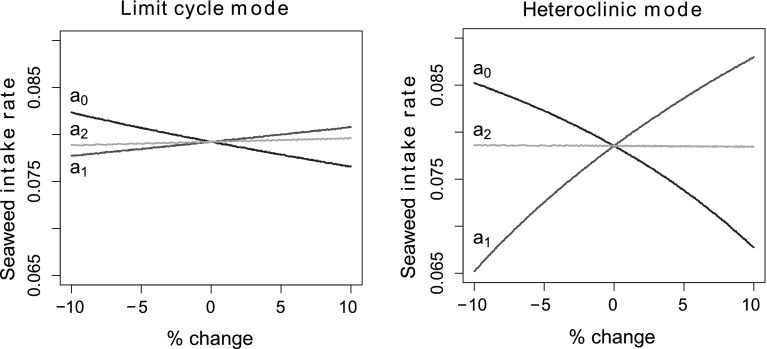Fig. 6.
Limit cycle mode is more robust to changes in sensory input parameters than the heteroclinic mode. Plots show the rate of seaweed intake in the continuous-swallowing task with across a range of values (between and of their default values) for the sensory input parameters . The blue, red, and yellow lines represent the effect of varying the input parameters to the , , and neural pools, respectively. Right The slopes of the red and blue lines are significantly steeper in the heteroclinic mode case, indicating that in this mode, the performance of the model is more strongly affected by small changes in parameter values. Left In comparison, the performance of the limit cycle mode changes much less in response to varying sensory input parameters. The limit cycle mode is more robust in the sense that it is less susceptible to potentially deleterious changes in the parameters. Here the limit cycle mode has been tuned to have comparable performance to that of the heteroclinic mode when the parameters are unperturbed (color figure online)

